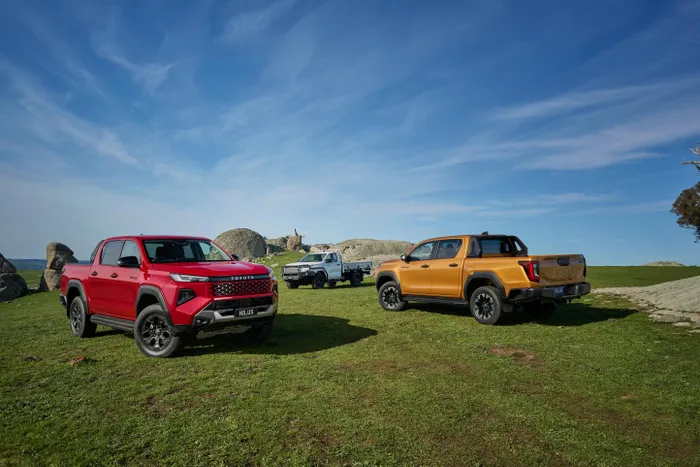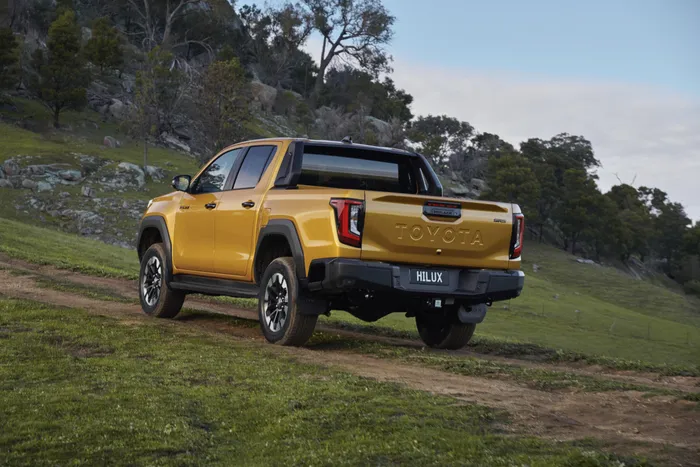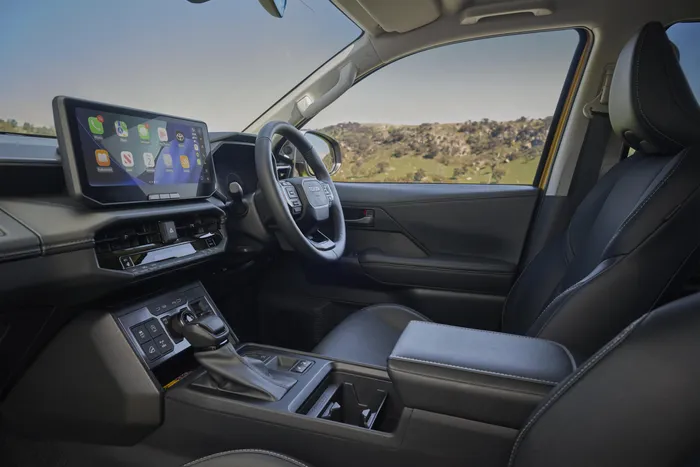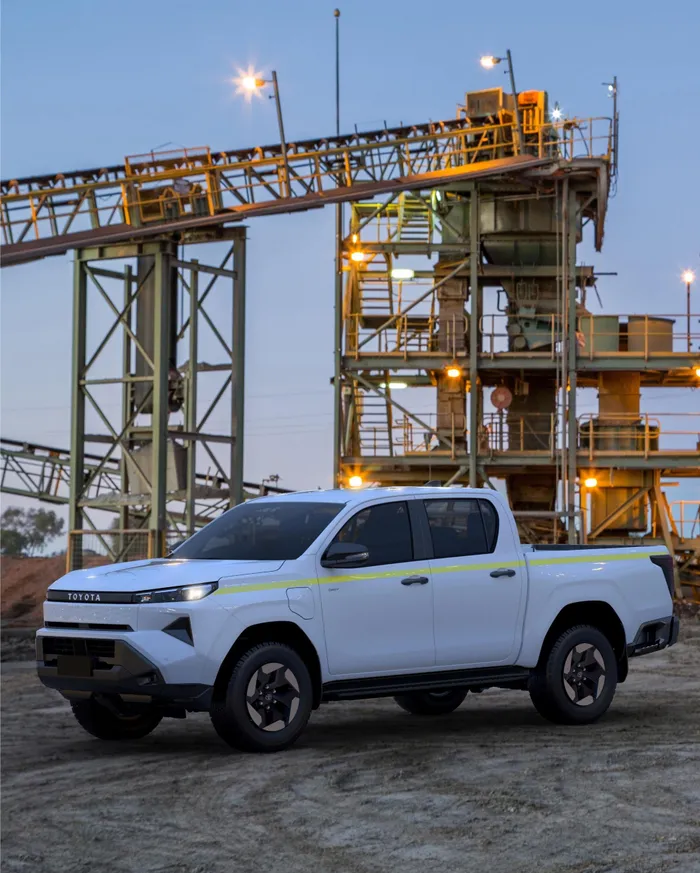Discover the new Toyota Hilux: the must-know game-changing features of SA’s beloved bakkie

Details of the new Toyota Hilux have been revealed.
Image: Supplied
More details have emerged following the official reveal of the new Toyota Hilux in Thailand, and no doubt South Africans will be champing at the bit to continue its status as the country’s favourite bakkie.
We know that the new Hilux will also be built at the Prospecton plant in Durban, but at this stage, we know only that it will be released sometime in 2026, with models and specifications still under wraps.
Powertrains
According to the official Australian press release, all grades of the new Hilux will be powered by the company’s 2.8-litre turbo-diesel four-cylinder engine, producing 150kW and 500Nm of torque paired to a six-speed automatic transmission.
Variants fitted with a six-speed manual transmission develop 420Nm of torque.
At this stage, there is no official word on whether the 2.4-litre turbo diesel or petrol options will be available locally.
Toyota’s 48-volt V-Active technology will also be standard on automatic double-cab SR grades and above, with an additional 8.5kW and 65Nm of thrust when starting off.

The exterior design was spearheaded by the Toyota Australia design team, developed in collaboration with global Toyota teams.
Image: Supplied
As part of Toyota’s multi-pathway approach to decarbonisation, a hydrogen fuel cell (FCEV) variant is scheduled to join the line-up in 2028.
For the first time, there will be a battery-electric powertrain aimed at fleet and business customers.
Available in double-cab 4x4 SR and SR5 guise, BEV grades will be introduced in 2026 and will be underpinned with an electric motor on each axle, paired with a lithium-ion battery.
It has a combined output of 144kW, while the 59.2 kWh lithium-ion battery enables a claimed range of more than 300 kilometres.
Further details on the BEV powertrain will be revealed closer to launch in 2026.
Toyota will offer the new Hilux with a choice of 21 different diesel variants in single, extra and double cab configurations, 4X2 or 4X4 drivelines, manual or automatic transmissions, and WorkMate, SR, SR5, Rogue and new Rugged X grades.
The new Rugged X variant offers improved off-road capability with the standard fitment of a range of specifications designed for protection and recovery in off-road terrain.
Exterior
The exterior design was spearheaded by the Toyota Australia design team, developed in collaboration with global Toyota teams. Based on a “Cyber Sumo” design theme, the new Hilux comes with slim-line headlights, sharp lines, and completely redesigned front and rear ends.

The interior has been completely redesigned and upgraded.
Image: Supplied
Overhauled interior
The new-look interior brings a significant improvement in modernity, comfort, technology and ergonomics.
There’s a fully redesigned three-tiered dash that sits flatter compared with the current model to provide improved forward visibility, especially helpful when off-roading.
All grades feature a new digital instrument cluster – 7.0-inch for WorkMate and SR grades and 12.3-inch on SR5 and above, while a new 12.3-inch multimedia touchscreen display sitting above the centre console is standard on every variant.
The upgraded multimedia system offers wireless Apple CarPlay and Android Auto compatibility with embedded satellite navigation and voice command, and expanded Toyota Connected Services functionality.
A wider centre console improves amenity and rigidity, with a taller centre console storage lid that matches the height of the door armrest and slides forward.
Interior comfort has also been improved with newly developed front and rear seats, with up to an eight-way powered driver’s seat with lumbar support adjustment and leather-accented upholstery, depending on the grade.
Below the 12.3-inch touchscreen, the climate control panel offers simple and intuitive use with physical buttons and dials that allow the driver to keep their eyes on the road ahead.
The steering wheel has also been redesigned with improved ergonomics and an updated button layout, grouped into three zones – infotainment, audio and driver assistance, with a steering wheel heating function available on select grades.
Under the skin enhancements
The new Hilux now gets electric power steering, which delivers improved feel, response and ease of use in all driving conditions and improves the functionality of the lane-keeping safety systems.
For the first time, there’s a new two-tiered suspension tune with springs and dampers designed for either heavy-duty work or more comfort and adventure-oriented private use.
With a revised independent coil-sprung front and rigid axle leaf-sprung rear suspension offered across the range, WorkMate and SR grades employ a spring and shock absorber tune geared toward heavy load carrying and towing, while SR5 and up use different spring rates and suspension stroke to provide enhanced ride comfort for everyday use.
The 4x4 capabilities have been enhanced with the standard fitment of a rear locking differential and the Multi-Terrain Select (MTS) traction control system on automatic SR 4x4 grades and above. The MTS system underwent substantial tuning and refinement by Toyota Australia’s vehicle evaluation team to handle harsh and varied terrain.

A Toyota Hilux BEV will be added to the range in 2026.
Image: Supplied
Automatic double cab pickup SR5 grades and up add the Multi-Terrain Monitor, which uses a suite of cameras around the vehicle to offer drivers a range of views of the vehicle’s surroundings and underbody, along with the placement of the wheels to allow for safe navigation of difficult obstacles.
The ladder-frame platform has been enhanced to improve comfort, rigidity and crash performance, including new hydraulic engine mounts and shear-type cabin mounts which reduce vibrations and enhance ride comfort.
Front suspension tower thickness has been increased to accommodate the new electric power steering, with the number of fitting bolts increased from three to four, while two frontal frame cross members have also been revised.
Frontal crash performance has been improved with newly designed front rail extensions made to improve impact absorption.
Safety
Active safety technology has also been enhanced with the adoption of the latest Toyota Safety Sense driver-assistance technology suite, which is standard across the range.
This includes Toyota’s pre-collision safety autonomous emergency braking system, active cruise control, lane departure alert, lane trace assist, road sign assist (speed signs only) and auto high beam.
Other standard safety features include blind spot monitor, rear cross traffic alert and on pick-up grades, front and rear parking sensors.
The new Hilux is also the first Toyota to feature a new cabin detection alert system, which uses a radar to detect passengers in the rear seats and notify the occupants when exiting the vehicle.
Related Topics: